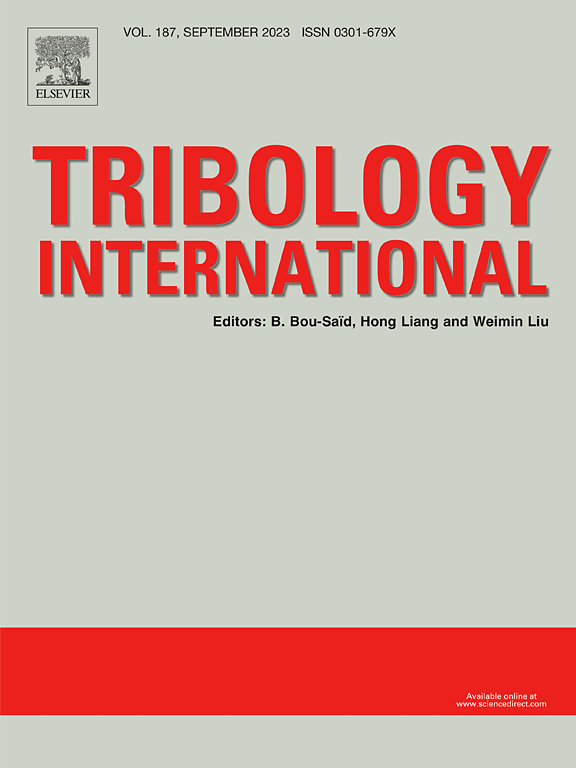FeCrNi MEA的力学和摩擦学性能:分子动力学模拟
IF 6.1
1区 工程技术
Q1 ENGINEERING, MECHANICAL
引用次数: 0
摘要
采用纳米压痕和纳米划痕相结合的方法,对FeCrNi介质熵合金(MEA)的摩擦学性能和变形机理进行了分子动力学模拟。在肖克利部分位错成核和层错扩散的驱动下,纳米压痕表现出符合压痕尺寸效应的硬度变化、非线性弹性恢复衰减和深度较大的塑性功优势。纳米划痕模拟显示了划痕速度不敏感的磨损形态,而深度和温度显著改变了磨损特征和磨损原子数。建立了摩擦力、位错动力学和能垒跃迁之间的相关性。不同条件下磨损原子运动学的表征为优化先进制造中的MEA应用提供了关键见解。本文章由计算机程序翻译,如有差异,请以英文原文为准。
The mechanical and tribological performance of FeCrNi MEA: Molecular dynamics simulation
Molecular dynamics simulations were employed to elucidate the tribological properties and deformation mechanisms of FeCrNi medium entropy alloy (MEA) via combined nanoindentation and nanoscratch methodologies. Nanoindentation revealed hardness variations conforming to the indentation size effect, nonlinear elastic recovery decay, and plastic work dominance at greater depths, driven by Shockley partial dislocation nucleation and stacking fault proliferation. Nanoscratch simulations demonstrated scratch speed-insensitive wear morphology, whereas depth and temperature significantly altered wear features and wear atom counts. Correlations between frictional forces, dislocation dynamics, and energy barrier transitions were established. Characterization of wear atom kinematics under diverse conditions provides critical insights for optimizing MEA applications in advanced manufacturing.
求助全文
通过发布文献求助,成功后即可免费获取论文全文。
去求助
来源期刊

Tribology International
工程技术-工程:机械
CiteScore
10.10
自引率
16.10%
发文量
627
审稿时长
35 days
期刊介绍:
Tribology is the science of rubbing surfaces and contributes to every facet of our everyday life, from live cell friction to engine lubrication and seismology. As such tribology is truly multidisciplinary and this extraordinary breadth of scientific interest is reflected in the scope of Tribology International.
Tribology International seeks to publish original research papers of the highest scientific quality to provide an archival resource for scientists from all backgrounds. Written contributions are invited reporting experimental and modelling studies both in established areas of tribology and emerging fields. Scientific topics include the physics or chemistry of tribo-surfaces, bio-tribology, surface engineering and materials, contact mechanics, nano-tribology, lubricants and hydrodynamic lubrication.
 求助内容:
求助内容: 应助结果提醒方式:
应助结果提醒方式:


